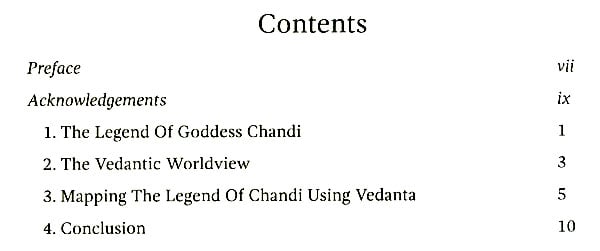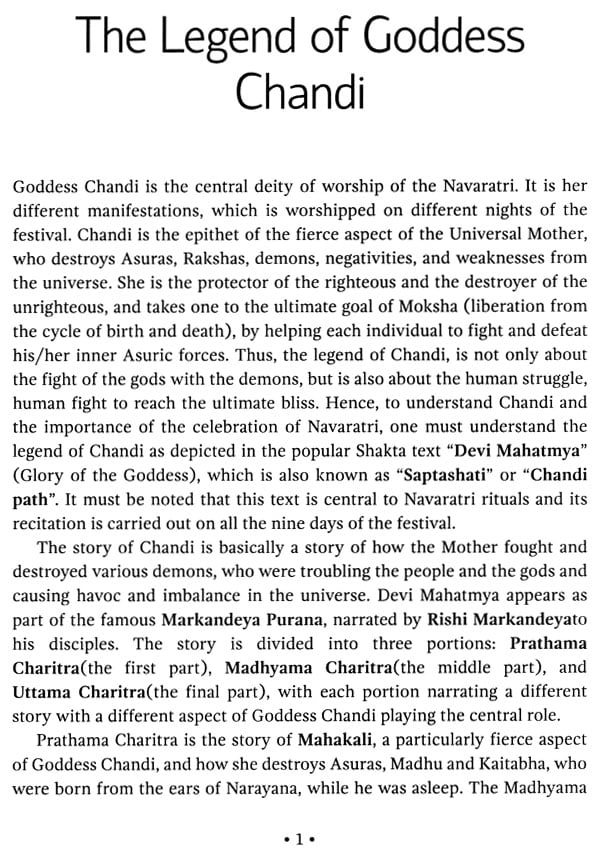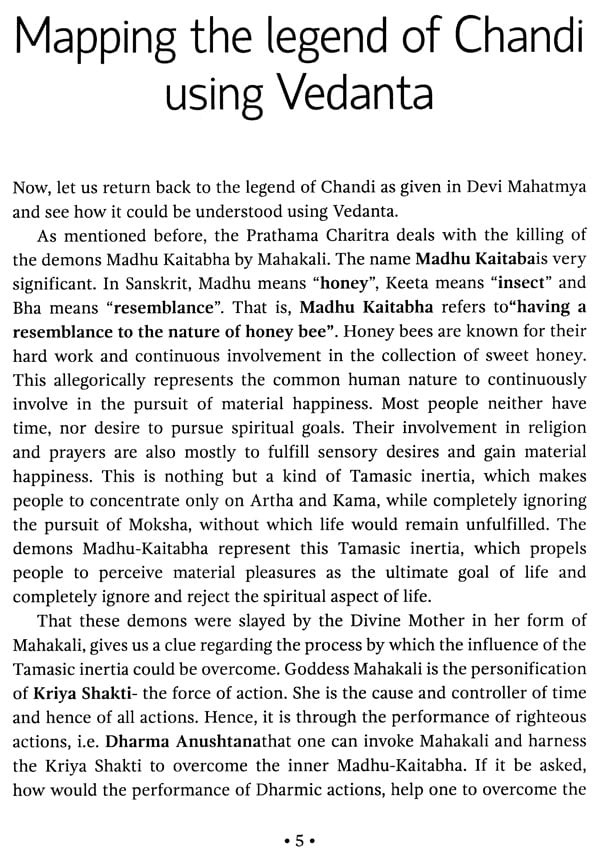
Candika (The Story of Goddess Durga and Its Vedantic Import)
Book Specification
| Item Code: | NAT325 |
| Author: | Nithin Sridhar |
| Publisher: | Xpress Publishing |
| Language: | ENGLISH |
| Edition: | 2019 |
| ISBN: | 9781645463115 |
| Pages: | 24 |
| Cover: | PAPERBACK |
| Other Details | 9.00 X 6.00 inch |
| Weight | 60 gm |
Book Description
Navaratri or the festival of nine nights is one of the most important festivals celebrated by the Hindus across the world. There is a diversity in the way the festival is celebrated in various parts of the country, with different local rituals, traditions, and modes of worship being employed in the festival celebration.
But, what remains unchanged is the association of the festival with the worship of Divine Mother: Goddess Chandika, who is variously worshiped in her numerous forms as Kali, Durga, Parvati, Lakshmi, Saraswati, etc. The festival begins a day after Mahalaya Amavasya, when the Goddess manifests in the physical plane in all her glory, thus marking the beginning of the Devi-Paksha, a 15-day period, which is most conductive for the worship of the Divine Mother. Since, the Divine Mother, Adya, manifests her innumerable forms during this period, various traditions have organically evolved to facilitate the worship of different manifestations of the Mother on different nights. Thus, some people worship Nava-Durgas, the nine forms of Durga: Shailputri, Brahmacharini, Chandraghanta, Kushmanda, Skandamata, Katyayani, Kalaratri, and Siddidhatri; some worship the ten Mahavidyas: Kali, Tara, MahaTripura Sundari (or Shodasi or Sri), Bhuvaneshvari, Chinnamasta, Bhairavi, Dhumavati, Bagalamukhi, Matangi, and Kamala; and some others worship: Mahakali, Mahalakshmi, and Mahasaraswatifor three days each.
The last tradition of worship is particularly interesting, not only because, this mode of worship is widely practiced and is closely associated with the legend of Chandi, but also because it contains within itself deep insights of Vedanta Darshana and acts as a practical facilitator for attaining the Vedantic goal of Brahma-Atma-Aikyam (Realization of the unity of Brahman and Atman).
**Contents and Sample Pages**








